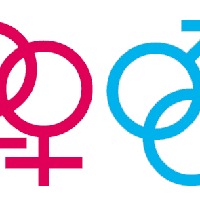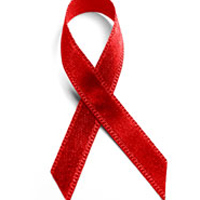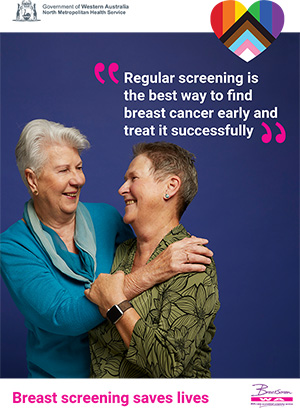Spring is most certainly in the air and Pride month celebrations are in full swing – it’s a fantastic time of year for so many reasons. In honour of the occasion, it seems only fitting to change things up a bit and step outside my world of homes and interiors to take a look at design and symbols that have become instantly recognisable as part of our gay culture.
In reading about some of the history behind our community’s icons and experiences, I hope that I can inspire a sense of how lucky we are to be alive and gay in 2010 and perhaps teach you something that you didn’t already know – Happy Pride Month everyone!!
THE RAINBOW FLAG

The Pride or rainbow flag has become one of the most visually recognisable symbols the lesbian, gay, bisexual and transgender community across the globe. The rainbow, as seen in many cultures, symbolises qualities such as diversity, inclusiveness, hope and yearning, not to mention in a biblical sense a promise of a brighter future.
The flag was originally designed by Gilbert Baker in 1978 and first adopted by the gay community in San Francisco for the historical Gay Freedom Day Parade of the same year, in which significant basic gay rights were first won. The original flag consisted of 8 stripes – each colour with an associated meaning [hot pink = sexuality, red = life, orange = healing, yellow = sunlight, green = nature, turquoise = magic & art, indigo = serenity & harmony and finally violet = spirit].
The flag as we see it today has fewer colours than its original design and is most commonly shown with 6 bands. Nonetheless its meaning remains the same as it continues to represent a proud symbol for our vibrant community.
THE PINK TRIANGLE 
The Pink Triangle has evolved to represent a symbol for the modern gay rights movement. It’s an image that is second only to the rainbow flag in popularity. Its unfortunate roots are taken directly from the Nazi concentration camp badges of World War II. Gay men alongside those imprisoned for sexual offences were made to wear this symbol as a badge of shame. The number of men convicted of homosexuality during this period is put at somewhere between 50,000 and 63,000, which is a figure far higher than most of us would be aware. Women convicted of these offences were made to wear a black triangle in the same manner. Even after the war ended, many gays remained imprisoned until 1969 at which point German laws were changed and homosexuality was no longer deemed a felony.
It was towards the end of the 1970’s that we saw the symbology of the pink triangle taken back, stripped of its offensive nature and given a new identity representing protest for gay rights. In 1987 the image was again reinvented, this time by the AIDS Coalition to Unleash Power. This period was at the height of the HIV/AIDS epidemic – still a time when much was still to be discovered about a new disease any many of our gifted and talented community paid the price. The pink triangle was inverted and accompanied by the slogan ‘SILENCE = DEATH’.
The icon as we see it today (generally a simple inverted triangle) conveys a symbol of empowerment, triumph over adversity and remembrance of those who lived in more difficult times before us.
GENDER SYMBOLS 
The gender symbols that we see and use today are common astrological signs dating back to ancient Roman times. The two basic icons are the pointed ‘Mars’ symbol used to represent male and the ‘Venus’ symbol with the cross to represent the female. There is also an addition of a third symbol being ‘Mercury’ which is used to indicate transgender people.
Since the early 1970’s we have seen the use of double interlocking symbols of the same sex to indicate either gay or lesbian individuals. It was also in the 70’s that we saw gay liberation movements using male and female symbols superimposed to represent the common goals of lesbians and gay men. More recently this same symbol commonly represents a heterosexual who is aware of the differences and diversity between men and women. Male and female symbols aligned where the cross and the arrow join on the same ring would also represent transgender people. Bisexuality is indicated in much the same manner, simply with the appropriate combination of 3 gender symbols. In recent years however the use of two offset crescent moons facing away from each other has become commonplace.
THE RED RIBBON 
The red ribbon is a symbol of solidarity for those living with, those affected by HIV and those who have lost their lives through HIV/AIDS. It is a symbol for both drug prevention and the fight against HIV/AIDS, as well as a commitment to challenge the stigma and prejudice surrounding HIV. It is a symbol not just for our community but also for the world as a whole. The colour red was chosen for its primal connection with blood and the idea of passion, it also emotes towards the ideas of anger and love.
Originally the concept of a red ribbon was formed by the New York based ‘Visual AIDS’ Artists Caucus in 1991. A painter Frank Moore came up with the idea after seeing a neighbouring family had displayed yellow ribbons (tie a yellow ribbon around the old oak tree) in support of their daughter’s safe return from the Gulf War. The Red Ribbon metaphor quickly became an international symbol for HIV/AIDS awareness after being worn by Jeremy Irons at the 1991 Tony Awards and although World AIDS Day is officially held on December 1, a Red Ribbon has evolved to become a powerful visible symbol of hope and support and is worn by people year round.
Remember to check out Matt Tucker Interiors facebook page to see what’s new in design world.
Matt Tucker
***





